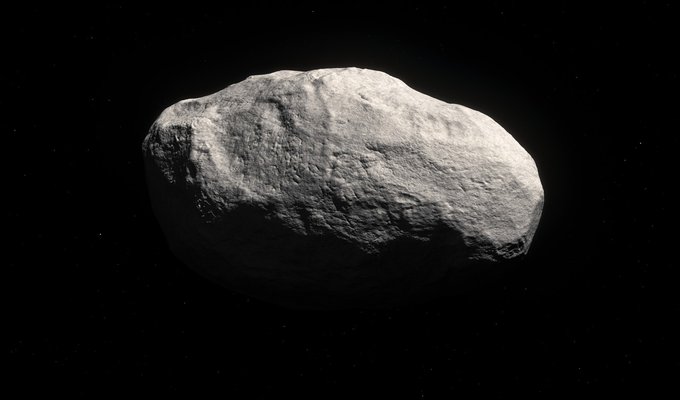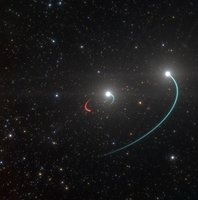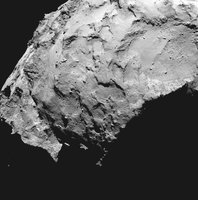When comets travel near the Earth, some of their ices evaporate because of the heat of the Sun, creating a wonderful "tail" as it travels across the night sky. The Manx Comet isn't made of the same material as other comets, so it doesn't have a tail. This is why it was named after the famous, tailless "Manx" cat.

Whether it’s a loaf of bread or a space rock, the best way to preserve anything is in a freezer.
Our Solar System has its own freezer compartment: the Oort Cloud. The Oort Cloud (pronounced ‘ort’) is a gigantic group of comets beyond Neptune’s orbit. It’s so far from the Sun’s heat, that temperatures in the Oort Cloud can drop to minus 250°C and lower!
This cold, dark place is ideal for preserving ancient relics from the earliest days of our Solar System — including the Manx Comet.
Despite its name, it is believed that the Manx Comet is actually an asteroid. Asteroids are chunks of rock left over from the birth of our Solar System’s rocky planets (Mercury, Venus, Earth and Mars).
The Manx Comet was born close to the Sun 4.5 billion years ago, at the same time as the Earth. Soon afterwards, this unlucky asteroid was flung into the shadows at the edge of the Solar System. Billions of years later, it was discovered by chance as it headed back towards the Sun.
Recently, the Manx Comet was nudged out of the Oort Cloud on to a path that brings it closer to the Sun. In its new orbit, the Manx Comet will fly past our part of the Solar System every 860 years!
Our Solar System contains thousands of asteroids, all of them have been baked by spending billions of years near the Sun. Except the Manx Comet. The Manx Comet has been preserved in the Oort Cloud — the best freezer our Solar System has to offer!
This is the first uncooked asteroid ever observed. It’s a perfect fossil from when the Solar System was very young and could reveal exciting new information about how our home in the Universe came to be.





















